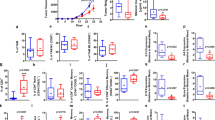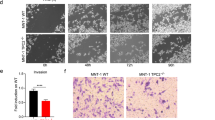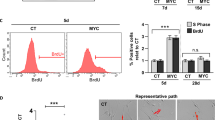Abstract
WE have previously suggested that factors which regulate the proliferation and pigmentation of Cloudman S-91 mouse melanoma cells share common biochemical pathways1,2. Our conclusion was based on the following observations: (1) most mutant cells selected for their ability to grow in culture medium containing melanocyte-stimulating hormone (MSH) show an altered ability to produce pigment1, and (2) tyrosinase is activated in response to elevated levels of cyclic AMP in a reaction apparently mediated by a cyclic AMP-dependent protein kinase3. This same protein kinase has been implicated as a positive regulator in the proliferation of Cloudman cells4. In addition, we found that some precursors of melanin are cytotoxic and that cells actively producing melanin run the risk of self-destruction through a build-up of these precursors. We have previously shown that pigmented cells are killed as a result of exposure to excess tyrosine or dihydroxyphenylalanine (dopa) in the culture medium2,5. It has since been demonstrated that actively melanising cells release a cytotoxic agent into their culture medium6. Here we present further evidence for the cytotoxicity of melanin precursors and show that 5,6-dihydroxyindole is one of the toxic compounds in the melanin biosynthetic pathway.
This is a preview of subscription content, access via your institution
Access options
Subscribe to this journal
Receive 51 print issues and online access
$199.00 per year
only $3.90 per issue
Buy this article
- Purchase on Springer Link
- Instant access to full article PDF
Prices may be subject to local taxes which are calculated during checkout
Similar content being viewed by others
References
Pawelek, J. et al. Proc. natn. Acad. Sci. U.S.A. 72, 951–955 (1975).
Pawelek, J. J. invest. Derm. 66, 201–209 (1976).
Korner, A. & Pawelek, J. Nature 267, 444–447 (1977).
Pawelek, J. J. cell. Physiol (in the press).
Pawelek, J., Wong, G., Sansone, M. & Morowitz, J. Yale J. Biol. Med. 46, 430–443 (1973).
Halaban, R. & Lerner, A. B. Expl Cell Res. 108, 119–125 (1977).
Lerner, A. B. Am. J. Med. 52, 141–148 (1971).
Hochstein, P. & Cohen, G. Ann. N.Y. Acad. Sci. 100, 876–886 (1963).
Graham, D. G., Tiffany, S. M. & Vogel, F. S. J. invest. Derm. 70, 113–116 (1978).
Lerner, A. B. & Hendee, J. R. J. invest. Derm. 60, 16–19 (1973).
Axelrod, J. & Lerner, A. B. Biochim. biophys. Acta 71, 650–655 (1963).
Pigment Cell Vols 1–5 (S. Karger, New York, 1973–78).
Author information
Authors and Affiliations
Rights and permissions
About this article
Cite this article
PAWELEK, J., LERNER, A. 5,6-Dihydroxyindole is a melanin precursor showing potent cytotoxicity. Nature 276, 627–628 (1978). https://doi.org/10.1038/276627a0
Received:
Accepted:
Issue Date:
DOI: https://doi.org/10.1038/276627a0
This article is cited by
-
Identification of critical amino acid residues in the regulatory N-terminal domain of PMEL
Scientific Reports (2021)
-
Melanization as unfavorable factor in amelanotic melanoma cell biology
Protoplasma (2021)
-
Repeat domain-associated O-glycans govern PMEL fibrillar sheet architecture
Scientific Reports (2019)
-
Brain region specific mitophagy capacity could contribute to selective neuronal vulnerability in Parkinson's disease
Proteome Science (2011)
-
Human Hair Follicle and Epidermal Melanocytes Exhibit Striking Differences in Their Aging Profile which Involves Catalase
Journal of Investigative Dermatology (2011)
Comments
By submitting a comment you agree to abide by our Terms and Community Guidelines. If you find something abusive or that does not comply with our terms or guidelines please flag it as inappropriate.



